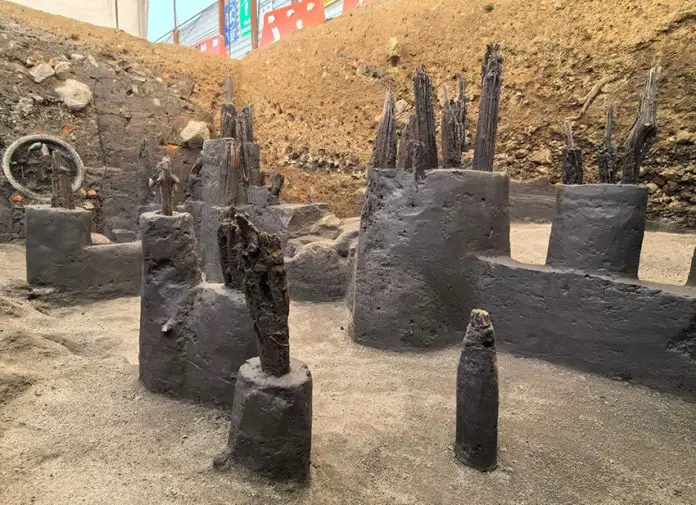During construction work to build a tunnel in Mexico City, the National Institute of Anthropology and History (INAH) discovered a small dock and parts of a human-made canal from pre-Columbian times under Chapultepec Park.
Archeologists think the canal, set on what used to be the beach of a peninsula at the foot of the Chapulín Hill, must have been a “water path” connected with Lake Texcoco.
INAH researcher María de Lourdes López Camacho said the discovery was a stroke of luck, given its location in an area that has been heavily disturbed since the end of the 19th century due to construction of housing and the Chapultepec Metro Station.
Furthermore, she said the canal must have been a main waterway.
Flanked by a thin layer of sand, the best-preserved section of the canal is underneath the vehicular stream of Chapultepec Avenue at the intersection with Lieja Street. Last year, archeologists discovered remnants of a housing unit from a pre-Columbian settlement that preceded the San Miguel Chapultepec community in this area.
INAH researcher María de Lourdes López Camacho explained that the house, which dates from the Late Postclassic period (1200-1521 A.D.), is aligned with the canal.

“There was a path that the residents used to access the main road. Often, the ‘water paths’ ran parallel to the dirt ones,” she said.
López explained that the canal appears on the Santa Cruz Map, the earliest known map of Mexico City created in the 1550s. The map depicts the canal with a canoe in transit. With a maximum width of 1.8 meters, the canal was wide enough for small vessels to transit.
According to the analyses carried out by the archaeobotanical expert Aurora Montúfar López, some of the canal’s posts are made of fir. Samples of timber used to build the dock, ranging from 40-137 cm tall and 13-29 cm thick, will be sent to the INAH laboratories for analysis.
Excavators also found remains of common lake deposits like seeds, wood, gastropods and roots. Some of the recovered samples reveal that residents of this area had a diet based on quelites (edible herbaceous plants like purslane and lamb’s quarters), squash and tomato. Other objects include items from the early colonial period (1521-1620 A.D.), including the first hammered coins of New Spain and basins bearing the seals of hospitals run by religious orders.
Mexico News Daily
